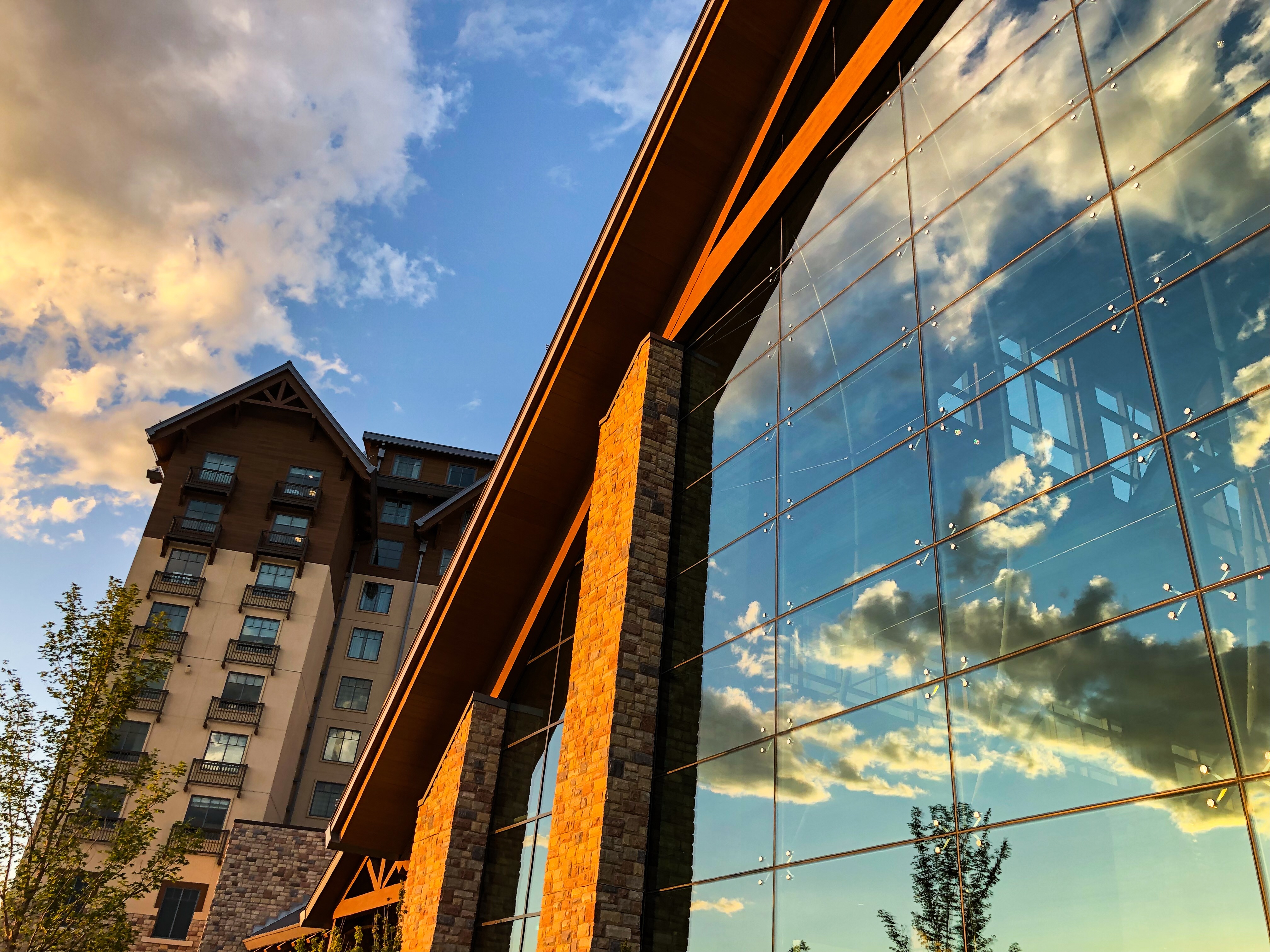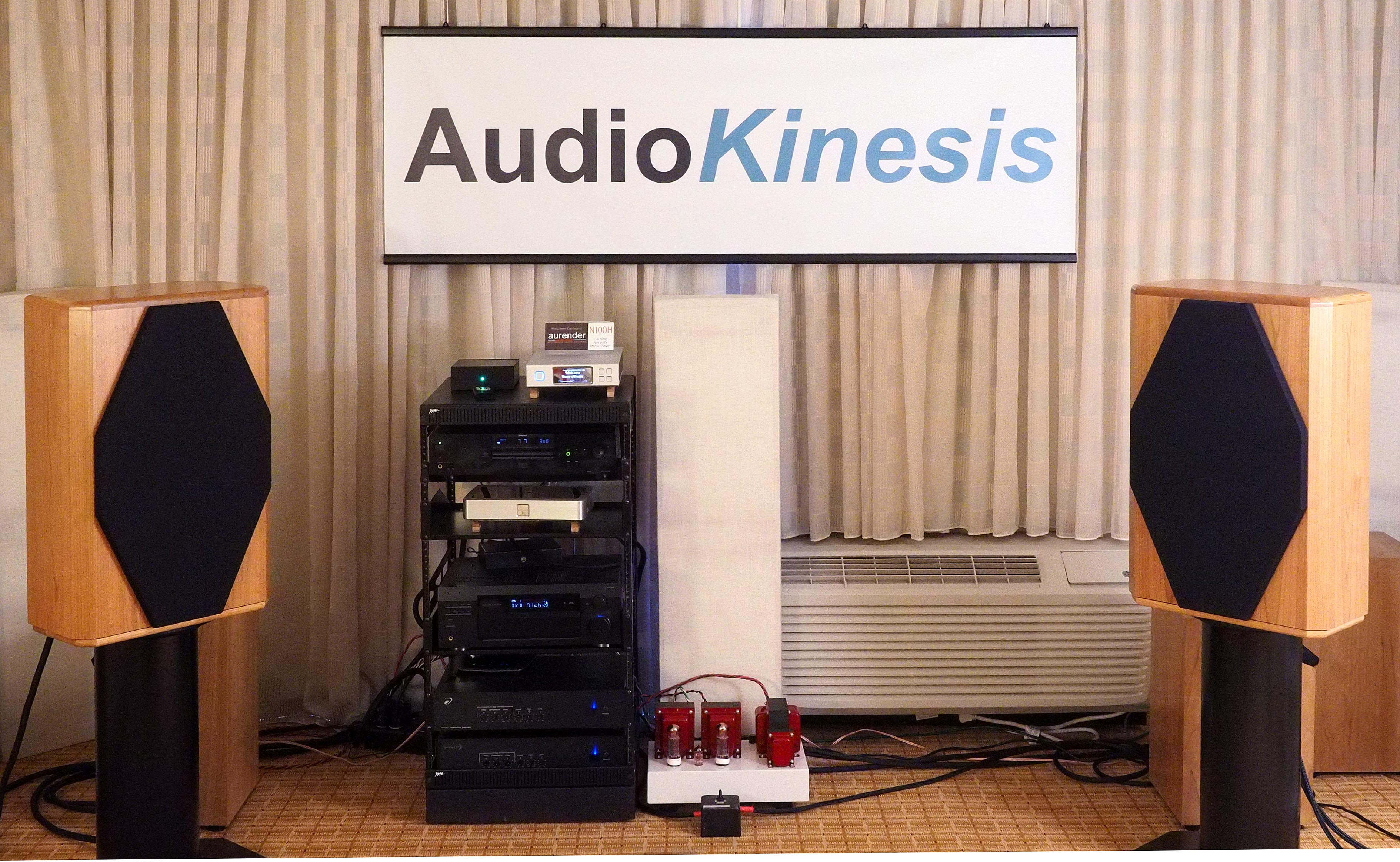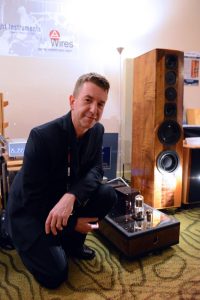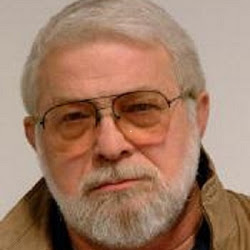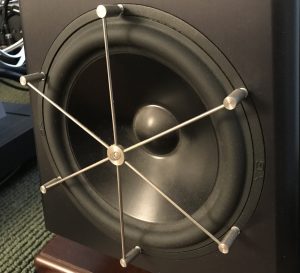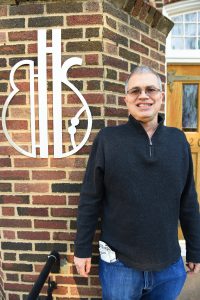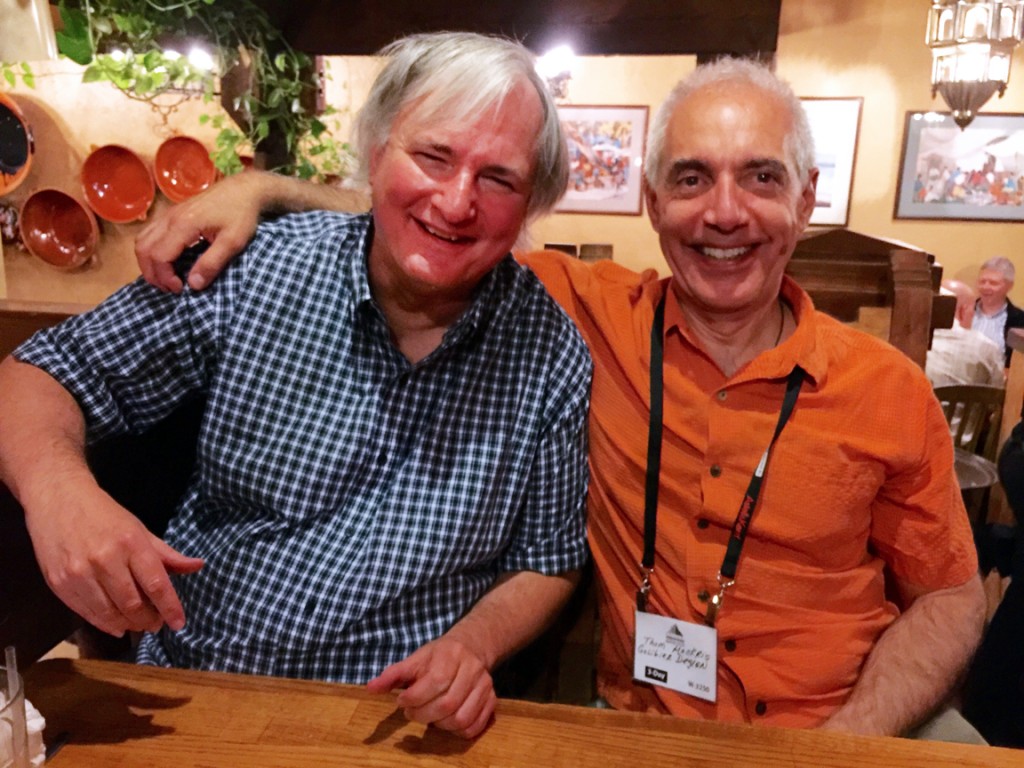
Lynn Olson and Thom Mackris, RMAF 2015
Let's start with a skeptical view from Steve Guttenberg, who's been around the block more than once:
https://www.youtube.com/watch?v=BIKkBgpo75I
Steve's got a point. Surround music has failed in the marketplace not once, but twice. The first was a ten-year window in the Seventies, with the LP-based QS, SQ, and CD-4 systems, and the second time in the 2000s, with the commercial failure of DVD-A and SACD. Now, don't be too hasty, you might think, but SACDs were intended to replace CDs, but they didn't, surviving instead in a (very) small niche market.
As the year 2020 approaches, the dominant music media are delivered in 2-channel. In order of popularity, they are subscription streaming services, Compact Disc, pay-per-download, and the resurgent LP. Most of this isn't even the 44.1/16 PCM of the Compact Disc format; it's streamed lossy-compression digital anywhere between 128 kbps and 320 kbps.
A small portion of the audiophile pay-per-download market is high-resolution PCM and DSD, and a smaller proportion of that is multi-channel PCM and DSD. SACD's are still being made, some of them are multi-channel, but the Universal disc players that support Blu-ray discs, DVD-A, and SACD in multi-channel are going out of production; most of the inexpensive Blu-ray players on the market (the ones you see at Costco and Walmart) support 1080P and 4K video formats but not high-res audio, and definitely not SACD.
With Internet delivery replacing physical media, there's been a small retro movement towards collecting physical media. Most of the love and attention has gone towards LPs, and with good reason. There are enormous stocks of analog-era LPs all over the world, there's no issue about multiple incompatible systems (thanks to industry decisions made in 1958), and the latest modern phonographs sound really impressive. And LPs are fun to play… the artwork is great, they feel good to hold, and the little rituals of cleaning the stylus, carefully removing the LP from the sleeve, playing the record, watching it spin while you listen to it, then putting it back into the sleeve are satisfying. Some people have realized maybe they want to hold on to their CD's as well… no worries about a NAS crashing, network issues, format obsolescence, computer glitches, etc. etc. The data is pretty much incorruptible, short of outright destruction of the disc, and there are still lots of optical players around.
But what about us… the few who love the spacious and wide-open quality of surround music? The ones who either got the bug in the LP era or started building a collection of surround SACDs in the early years of the Millennium? Well, let's be honest, it's been pretty thin pickings. How many reissues of Dark Side of the Moon are you going to buy? Or obscure classical recordings by chamber groups or Middle European orchestras? There were a few hundred SQ releases in the Seventies, a smaller catalog of CD-4 (which are not CDs, but LPs with an ultrasonic FM carrier sitting atop the analog signal), and a smattering of QS and EV4 releases, along with quad 8-tracks (primarily intended for autosound playback).
Similarly, there were several hundred SACDs in a combined stereo + multi-channel format: make the appropriate selection in the player controls, and you get either the stereo or multi-channel mix (which are completely separate mixdowns, but sourced from the same multi-track master). The drawback with the initial wave of SACD players was the sound being trapped in the player; the only way to hear multi-channel is through the analog jacks on the rear. If you had an audiophile-grade DAC or AVR, all you could get off the SACD through the S/PDIF jack was a serious downgrade: 44.1/16 PCM in stereo, that's it, and probably not even as good as the off-the-shelf CD release, since the in-player downmix is not a studio-quality resampling and re-dithering.
This lands us squarely in one of the oldest fights in the surround-music community: matrix vs discrete recordings. The discrete enthusiasts, who basically won the fight when DVD-A and SACDs arrived on the market (no more LP limitations!), omit one thing form their arguments. It does nothing for the vast majority of stereo recordings that have dominated the market for the last sixty years. (Yes, stereo is that old.) Purists maintain the correct way to listen to stereo is with two loudspeakers, but I, and small group of matrix enthusiasts, don't agree.
Most people have never heard a really good decoder, and don't know what they are actually doing when they turn on "Dolby Pro-Logic II (music mode)" or "DTS Neo:6 (music mode)" in their AVR (which is where these software confections live). A good decoder translates the phase relationship between the two channels into the front-to-back Z axis of the listening space. With two good loudspeakers, this is only marginally audible: in-phase is front and center, out-of-phase is just outside the speakers, unstable, and "phasey" sounding, and random-phase is a diffuse band between and a little outside the speakers. Random phase is the result of natural acoustic reverberation, an EMT reverb plate, or traditional spaced-microphone recording technique. When the studio technique is instrument pickup with solo microphones, which is then "panned" into L/R space, the result is tightly in-phase, and the only random-phase content is from the reverb unit.
A correctly designed decoder for either quadraphonic or 5.1 will accurately place instruments in the front-to-back Z axis depending on the L/R phase relation in the original recording. Nothing is added: no reverb, no time delays on the rear channels, and no equalization. It just unscrambles what's already present in the 2-channel original, and makes it clearly audible. A good decoder is free of artifacts, listening fatigue, and sonic blurring; it operates invisibly in the background without any editorializing about the content. Very people have heard this; the best ones of the Seventies were confined to the laboratories, and the digital versions we now have in AVRs, to be frank, are not very good compared to the older analog originals.
Dolby Pro-Logic II, in particular, is slow-acting, diffuse, and the spatial character of the rear channels is completely different than the front channels. The most serious failing is that it sounds "shut-in," without the wide-open sound that is the hallmark of good surround sound. This is the whole point of surround: not instruments zooming around the room, like movie sound effects, but removing the 2-speaker proscenium effect, and putting you right there at the performance. A good quad system should not only sound good, but completely remove the listening room from the first needle drop. THIS is the point of surround sound, and to be honest, it is only rarely heard. Moving on, DTS Neo:6 is quicker and more spatial, but has occasional high-frequency artifacts that can give it spitty quality on some material.
There's a new arrival, the Australian-made Surround Master V2 from Involve Audio (http://involveaudio.com/surround-master/), that replicates or exceeds the performance of the most advanced analog decoders of the Seventies. It has a dedicated DSP onboard that decodes SQ and QS in either 4- or 5-channel formats, and the QS position is suitable for nearly all 2-channel recordings. There are an inevitable few recordings that will flummox any decoder (that have poorly recorded phase information), so it can be turned off and the recording listened to in 2-speaker stereo.
In the near future, Malcolm Lear in the UK will introduce a software version of the Shadow Vector (I've granted permission for Malcolm to use the name), running on dedicated digital hardware. This will be a digital-in, digital-out product, with digital look ahead and multi-band decoding, and offering SQ, QS, BBC Matrix H, and stereo enhancement into quadraphonic sound.
I understand what the purists are saying: Z-axis remapping is an abomination, and has nothing to do with the original musical and artistic intentions of the musicians and mastering engineers. But how far do you want to go on the "accuracy" train? If it's an acoustic recording with no added reverb (good luck with that), OK, fine, but I'd contend that a good decoder will pretty accurately re-create that acoustic space if the recording isn't too mucked up with zoom-in, zoom-out pan-potting. But what of rock, hip-hop, techno, EDM, or any modern style made in the last fifty years? There is no performing venue; it's as synthetic as a movie soundtrack, made of hundreds of "elements," and composed on a mixing desk (or laptop with DAW software).
So what do you re-create, anyway? If you're really serious, you should find out what speakers were used for the final 2-channel mastering session, and get those exact models. You'll find that you probably don't like the white-hot, analytical sound of professional studio monitors, particularly the ones from the Sixties and Seventies. If you're listening to a rock recording on modern, high-resolution speakers, that's NOT what the musicians and mastering engineer heard when they signed off on the sound years or decades ago. That, too, is a modern re-interpretation, certainly enjoyable, but not a sound that could even exist when the recording was made. Historians call this an "anachronism," projecting modern attitudes and experiences back into the past. So unless you're listening to Altec 604 Duplexes and a Stanton 681A cartridge, or Tannoy Dual Concentrics and a Decca cartridge, you're kidding yourself.
This isn't "accurate," it's a modern re-interpretation on gear that would have been science-fiction when the musicians sent the original sound waves to the microphones. So get off your high horse, purists. You're playing what you like, on equipment you like, but there's nothing "accurate" about what you're doing. If you're going for "accuracy," you need to re-create the sonic experience heard in the mastering sessions, not a re-interpretation on modern gear.
But still, for many audiophiles, Z-axis remapping is a bridge too far, and besides, four or more speakers just sound weird. OK, I get the point. There are listeners who never experience stereo fusion; they hear two speakers that have nothing to do with each other, and it's just a confusing, double-image mess. For these listeners, single-speaker mono is the only satisfying way to listen. The experience of phantom-images, and stereo fusion, is a matter of individual perception, and this applies to stereo as well as quadraphonic and 5.1.
This problem is much worse when the speakers are radically dissimilar, with different radiation patterns, and the decoding action is slow and unnatural. What works in a theater is NOT what works best in the home… for one thing, theater systems don't use image fusion or phantom-images at all, since nearly all the audience is off-axis, and 5 mSec of Haas precedence effect will just yank the phantom images into the closest loudspeaker. That's why theaters have always used a center speaker for dialog, because phantom images just don't work … this was discovered back in the early Fifties. Almost nobody in a theater is on the exact centerline, or the exact middle of the theater, so if a sound has to be localized, there has to be a speaker there. In the home, though, with reasonable care and a central listening position, there will be stable phantom images and a sense of acoustic space much larger than the listening room.
Even if you own an optimized surround system with 4 or 5 matched high-quality speakers and a top-quality decoder or DAC, the market for surround music is smaller than conventional stereo, because it's more demanding of system set-up, and it sounds unnatural to some listeners. By contrast, movies use all kinds of sound effects, from subtle environmental cues to the inevitable gunshot or comic-book-movie SFX, and the more channels (and power!), the better. It's not about subtlety in Hollywood, and never has been. The only choice a movie-goer has is whether to wear noise-dampening ear plugs or not.
I personally think the most serious problem that's limited the acceptance of multi-channel music is the extraordinary profusion of formats, and the challenge of finding a good-sounding, one-size-fits-all solution. Imagine a market where a color TV has to support three completely different formats, or mobile phones with two incompatible transmission systems… oh, wait, that's where the USA is right now.
There's a broad cross-compatibility between matrix-encoding/decoding systems and stereo, both up and down. Matrixed quad sounds as good, or better, when played in stereo than a "normal" stereo recording, and a well-engineered matrix decoder translates phase information on a stereo recording into the front-to-back Z axis. As mentioned earlier, the "Dolby Pro-Logic II (music mode) decoder in every AVR is well below the standard of the Sansui Vario-Matrix of the early Seventies, and nowhere close to the Shadow Vector prototype that I made around the same time. The DTS Neo:6 system approaches the Sansui decoder, although I hear it has been replaced by a less competent DTS decoder in modern AVRs that support Dolby Atmos.
Discrete quadraphonic and 5.1 systems are discrete, of course, so there's no issue of potential decoder artifacts (which is a problem with lower-quality decoders). On the other hand, cross-compatibility with stereo is poor. A quadraphonic or 5.1 mix is crudely downmixed into 2-channel with a substantial loss of spatial realism, and a discrete system plays stereo-only in the front 2 speakers, with the center and rear speakers silent.
Ideally, a multi-channel device should handle all formats, and offer the highest quality cross-compatibility between formats. For purists, stereo can be restricted to 2-speaker playback. Alternatively, stereo can be decoded using phase information already present in the recording to fill out the front-to-back Z axis, and do so without artifacts or blurring.
For the last twenty years, the market has divided between audiophile 2-channel systems and home theater, most recently with even more channels for Dolby Atmos and Aura 3D theater system playback (7.1.4… 7 ear-level channels, 1 LFE subwoofer channel, and 4 ceiling channels). The inconvenience of cutting holes in the ceiling for 4 additional speakers limits these systems to people who can afford dedicated home-theater rooms. There are plenty of new-release movies in this format, but music recordings are largely in the experimental phase. For 2-channel sources, the software "upmixers" in the AVR's tend towards a gimmicky, unrealistic sound, and are definitely not as good as the better quadraphonic decoders of the Seventies.
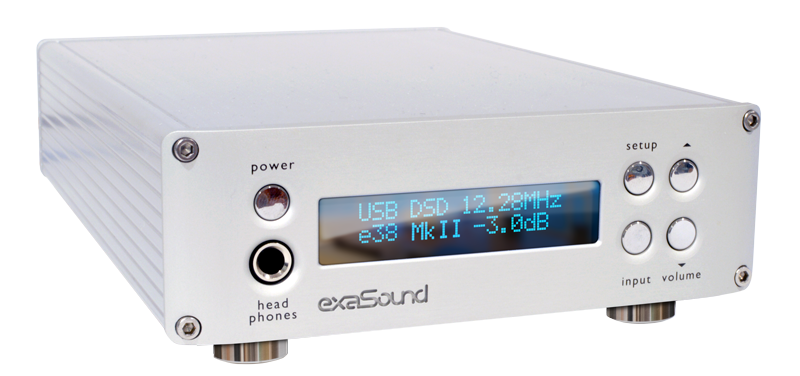
The exaSound e38 8-channel Quad DSD/PCM DAC (image courtesy of exaSound)
Kalman Rubinson's "Music in the Round" column in Stereophile has filled the void (https://www.stereophile.com/category/music-round), but the inflexibility of AVRs and lack of multi-channel DACs is really quite striking. In a market glutted with 2-channel audiophile DACs, and AVRs that are almost indistinguishable from each other, there are a grand total of THREE multi-channel DACs aimed at audiophiles: the miniDSP U-DAC8 ($299), the exaSound e38 ($3999), or the professional-class Merging Technologies NADAC Multi-channel-8 ($12,000).
(As an update to the above paragraph [08/08/19], Andreas Koch of Playback Designs sent along the following clarification:
"If the NADAC is a multi-channel DAC contender, then the Playback Designs Merlot should have been included also, with its optional USB-XIII interface. The NADAC is a 3-box system with separate power supply and clock generator, while the Merlot in its optional configuration is a 3-box system as well. It's just a different stuffing of the boxes, but who should care what's inside?")

The Merging Technologies NADAC MC-8 8-channel Quad DSD DAC with +POWER Power Supply and +CLOCK High-Performance Digital Clock.
The miniDSP corporation has come up with a clever workaround, the miniDSP U-DIO8 ($299) "multi-channel USB to AES-EBU or S/PDIF interface" which lets you use the U-DIO8 as a signal splitter to drive two, three or four conventional stereo DACs… but a significant restriction of the AES-EBU and S/PDIF interface is it does NOT support DSD in any form, so you're not going to be listening to multi-channel DSD or SACD's through the miniDSP U-DIO8 (unless the DSD tracks are converted to 176.4/24 PCM by the streamer or computer).
https://www.stereophile.com/content/music-round-93-minidsp-ripping-sacds
https://www.minidsp.com/images/documents/U-DIO8%20User%20Manual.pdf
And then there are AVRs. Sigh. Despite the occasionally shocking price, these are mostly assembled in China and have similar… but not identical… feature sets. You have to download the .pdf of the product manual to see if they offer a set of 7.1 analog inputs… some expensive pre/pro's, like the NAD M17 V2, do not. Look carefully at the illustration of the back panel to see if those six inputs are physically present (and the six channels labeled on the diagram). If you don't see them, look elsewhere. You'll be needing them.
Ideally, a Blu-ray Universal player should offer multi-channel DSD (not downsampled!) through the HDMI output… this spec is usually buried at the very end of the .pdf manual. Similarly, if the AVR offers multi-channel DSD input through HDMI, it's buried at the back of the manual where all the many different surround modes are mentioned… look for the "Pure Direct" mode for the multi-channel SACD inputs. The push for Dolby Atmos is wiping out what are seen as "legacy" modes, so look carefully. The OPPO 205 is already off the market, OPPO no longer makes any Blu-ray players, and the Marantz UD7007 appears to be gone too. It's looking like Universal players that output DSD through the HDMI output may already be passing away.
To repeat, S/PDIF and AES-EBU formats have never supported any form of DSD transmission, and tops out at 2-channel 192/24 PCM. toslink is even lower at 2-channel 96/24 PCM. (Multi-channel ADAT is physically similar to toslink, but is not a consumer format.) The great majority of SACD players have only offered full SACD-quality output through the analog outputs, so the quality of the sound is hardware-limited by the internal DACs and opamps. DSD over HDMI is a fairly rare feature, bound by a triple Venn diagram of SACD recordings, the rise of HDMI, and the slow disappearance of Blu-ray Universal players that can also play SACDs. Get 'em while you can!
Let's go back to the dawn of quadraphonic sound in the early Seventies. By then, the audio market had converted to stereo, with mono holding out in TV sound (there were serious FCC proposals for stereo TV audio in the early Sixties, but network-affiliated TV stations resisted the conversion expense), and low-fi AM broadcasting. With the triumph of stereo, research into something better was proceeding on several fronts. Here are the earliest stereo and multi-channel systems, followed by the modern multi-channel formats.
Analog Audio music sources (no display required)
- 2-channel, either stereo or matrixed encoded/decoded for quadraphonic. Nearly all stereo can be decoded successfully as quadraphonic (4-channel) with a high-quality dynamic decoder using the "QS" or "RM" settings. The Dolby Pro-Logic II (music mode) decoders in AVR's are not as good, and DTS Neo:6 (music mode) is intermediate in quality.
Sources: LP's, cassettes, pre-recorded tapes, and stereo FM.
4-channel Discrete
- Sources: CD-4 LP, 8-tracks, and pre-recorded tapes (now rare and expensive). CD-4 LP playback requires a CD-4 demodulator, a wideband (50kHz) phono cartridge, and very clean records. CD-4 LP's require special care in playback and are rare. 8-track tapes can only be played on forty-year-old machines, and the tapes themselves may have deteriorated from age. Prerecorded quadraphonic reel-to-reel tapes exist, but are extremely rare and expensive.
Digital Audio for Movies & Television (requires an HDMI display)
Broadcast HDTV standard is 5.1 Dolby Digital (proprietary licensed decoder required)
- Sources: broadcast, cable, satellite, or Internet streaming, output format is S/PDIF or Toslink 2-channel (downmix) or HDMI multi-channel. No USB interface. If Dolby Digital (or DTS) is fed into an audiophile or studio-quality DAC, this format will not be recognized, and full-output white noise will result.
Movie standard is 5.1, 7.1, and higher formats in Dolby Digital, DTS (proprietary licensed decoder required)
- Sources: Blu-ray disc or Internet streaming, output format is most commonly HDMI multi-channel. No USB. If Dolby Digital (or DTS) is fed into an audiophile or studio-quality DAC, this format will not be recognized, and full-output white noise will result.
YouTube, 2 channels with proprietary lossy-compression decoded through steaming app or Windows, Mac OSX, or Linux computer
- Sources: streaming, output through video streamer in S/PDIF or HDMI, or from computer in USB 48/16 PCM.
Digital Audio for music sources (no display required, except as noted); the largest catalog is presented first
2-channel 44.1/16 PCM, no compression, or lossless compression
- Sources: Compact Disc, AIFF, WAV or FLAC audio files, or TIDAL/Qobuz streaming. CD players have S/PDIF, AES, and Toslink outputs, computers have S/PDIF and USB outputs, and dedicated hardware streamers have S/PDIF and USB outputs.
2-channel in varying degrees of lossy compression, from 320kBps AAC at the highest quality to 96kBps MP3 at the lowest. Stereo quality sharply degrades at lower bitrates, making it less suitable for quadraphonic decoding
- Sources: iTunes, Spotify, etc, Internet radio, and DAB and DAB+ broadcasting. Computers and dedicated devices have USB, S/PDIF, and Toslink outputs.
2-channel 64fs (2.8 MHz) DSD
- Sources: SACD discs (ripping is complex and intentionally very difficult) and DSD file downloads. S/PDIF and Toslink do not support DSD format, so SACD players automatically downsample the digital output to 44.1/16 PCM. (The players internal downsampling process will be adequate, but below studio-quality.) A few Universal players offer DSD transmission through the HDMI output… refer to the PDF manual to see if this feature is present. DSD file downloads are aimed at computer users on the Windows and Mac OSX platforms, with the computer offering a USB output for an external high-quality DAC.
4- and 5-channel "surround" audio, usually without a 0.1 subwoofer track. PCM from 44.1/16 up to 196/24, and DSD from 64fs to 256 fs
- Sources: Internet downloads, or content copied with substantial difficulty from Blu-ray, DVD-A, or SACD discs. The Universal disc players don't have a USB output, S/PDIF is a 2-channel downmix from the surround content (or Dolby Digital), and native-format uncompressed multi-channel is only available on the HDMI output. This is fine if the DAC is built into an AVR, but not useful if the DAC is a studio or audiophile DAC with a USB input. (A set of 8-channel analog outputs are a common feature on computer mainboards, but the sound quality is severely compromised by noise and low-quality DACs.)
We're not done yet! There's the little matter of transporting the analog or digital signal from one component to another… from source to signal processor to amplifiers:
Analog Audio Signal Interfaces
Single-ended coaxial, with RCA connectors
Used for consumer applications. Bandwidth from DC to 10mHz, good RF shielding, but prone to ground loops in complex systems. BNC connectors, if used with 75-ohm terminations on both ends, can extend bandwidth to 1 GHz with good group-delay response. If hum problems cannot be resolved, the best solution are 1:1 isolating transformers, which breaks the ground connection between different pieces of equipment.
Balanced twisted-pair with shield and XLR connectors
Used for professional applications because of substantially better hum and noise rejection, especially if 1:1 isolating transformers are used. Bandwidth from DC to 10mHz or lower, due to group-delay ripples from uneven pair-twisting and RF reflections from the XLR connectors.
Although analog connections are essentially free of nonlinear distortions, they are prone to interference from other sources of noise, including RF pickup, which then induces distortion in audio electronics. Ground-loop problems are common in audio systems, and include not just 50/60 Hz hum, but buzzy-sounding harmonics extending through the audio spectrum. Low-level problems from corrosion (of untinned stranded copper wire), and chemical reactions of that wire with the plastic insulation, are probably responsible for the "burn-in" issues that audiophiles notice. The corrosion issue can be resolved by using tinned-copper wire, Litz-wire with individual enamel coatings for each strand, or silver wire, which does not exhibit diode characteristics on oxidized surfaces.
Digital Audio Signal Interfaces
S/PDIF, AES, or Toslink digital connections
S/PDIF and AES support 2-channels of PCM up to 192/24 rates (Toslink is limited to 96/24), or proprietary lossy-compression systems such as Dolby Digital/AC-3, DTS, or other systems. Audiophile DACs cannot decode lossy-compression systems, and will output full-level noise if they are exposed to them. (This roar of noise won't harm the DAC, but won't do any favors to your speakers or your hearing.) Home theater AVRs will automatically sense and switch between 2-channel PCM and the many different proprietary lossy-compression systems. A drawback of the S/PDIF, AES and Toslink transmission protocols is the mixing of clock signals and audio in the same data stream, which induces nanosecond-level jitter if group-delay variations exist in the connectors and cabling. The fact that different cables are audible indicates that rejection of jitter in the DAC is not as good as claimed.
ADAT
ADAT uses the physical media of Toslink but is a semi-professional protocol that supports 8-channels at 48/24 PCM (no DSD support). The S/MUX extension supports 4 channels at 96/24, or 2 channels at 192/24. Regardless of bit depth of the source, it is always transmitted through ADAT at 24-bit depth. Format is incompatible with Toslink and is not used in consumer equipment. See: https://en.wikipedia.org/wiki/ADAT_Lightpipe
USB
Surprisingly, USB 2.0 is adequate for multi-channel audio at high data rates; few studio or audiophile DACs require USB 3.0. High-rate audio (beyond 2-channel 44.1 or 48 kHz) requires the installation of a (free) ASIO driver for Windows computers, while ASIO is built into Linux computers. George Klissarov notes that "ASIO was removed from Mac computers with the introduction of OS X. exaSound has developed a proprietary workaround and our DACs support ASIO on Mac. Probably it is time for us to make it open-source." Good news for Mac users!
Some DACs will not operate without a proprietary driver, which may limit their use with Linux-based streamers.
HDMI in its many variations
HDMI is a proprietary, mostly video-oriented interface consortium that charges manufacturers $20,000/year to include it in their equipment, which is partly why it is not seen in audio equipment made by small-volume vendors. The other reason is the continual revision and extension of the HDMI specification, which is driven by TV set manufacturers to support a succession of video upgrades… 1080P, 3D 1080P, extended color space, 4K, Dolby Vision, 10-bits per color, etc. etc.
The audio side of HDMI supports the full gamut of audio used in TV and movies, from multi-channel PCM to the 1990's-era lossy codecs like Dolby Digital and DTS, to modern Dolby Atmos, DTS, and Auro 3D, with 8 ear-level channels, up to 6 height channels, and 2 subwoofer channels. Decoding all these formats requires an up-to-date AVR, with the full knowledge that the AVR will almost certainly be obsolete in three years or less. What will obsolete the AVR will be yet another revision of the HDMI standard, in either the video or audio domain.
Annoyingly, AVR's do not usually have a USB input for computer or streaming audio, although an Ethernet input is often present. In other words, the AVR has a brand-proprietary system for accessing various Internet subscription services, and this does NOT include Roon, and interfacing to a local NAS is clumsy at best.
Similarly, audiophile and studio-quality DACs do not have HDMI inputs, and will only output full-level noise if exposed to proprietary lossy-compression formats (on the S/PDIF, AES, or Toslink inputs). The only way to get multi-channel digital sound into a studio DAC is USB or ADAT. Audiophile DACs do not support ADAT, which is a semi-professional standard. The only ultra-high-resolution input format that audiophile DACs support is USB, since S/PDIF tops out at 192/24 PCM for 2 channels, and S/PDIF does not support DSD, stereo or multi-channel.
This odd gulf between USB for studio and audiophile DACs and HDMI for AVRs… with no cross-connections between the two worlds … leaves consumers in an awkward place.
If you want to hear multi-channel sound from DSD or PCM downloads, you want a multi-channel DAC with a USB input connected to a computer (not many hardware streamers support multi-channel).
If you want to hear multi-channel from an SACD, DVD-A, or Blu-ray disc, you connect the player via HDMI to a pre/pro or AVR, and hope for the best quality from the analog outputs (if present). The AVR manufacturers only rarely disclose the DACs and opamps used inside, and sometimes the analog output is such low quality it does not even support 2V rms output levels. Any attempt to use bass management, or room equalization, will result in DSD being automatically converted into 44.1/24 or 48/24 PCM.
If you want to hear optimal conversion from stereo to multi-channel, you can pick and choose from various software decoders in the same AVR's, but good luck getting one word of information on what these magic algorithms actually do. The Involve Audio Surround Master V2 decoder from Australia offers a top-quality software decoding of SQ, QS, EV4, and stereo content. This is an 2x analog-in, 6x analog-out device, with convenient front-panel level controls for direct connection to power amplifiers. The upcoming Shadow Vector from Malcolm Lear in the UK is a dedicated computer with decoding for SQ, QS, EV4, and perhaps most remarkably, BBC Matrix H, as well as stereo conversion. The Involve Audio Surround Master V2 and the Malcolm Lear Shadow Vector promise a more musically friendly solution compared to the mystery algorithms in an AVR.
As you can see, this is a ridiculous pile of equipment to simply play music from different sources. No wonder people are baffled and annoyed by the hardware requirements. Not only that, there's mutual distrust between the two cultures of audiophiles and home-theater enthusiasts. This is a very steep hill to climb. It doesn't help that the most versatile AVRs have only just-acceptable sound quality by audiophile (and studio) standards, and worst of all, are quickly obsoleted by the ever-growing profusion of video and audio formats for the cinema.
You'd have to be bonkers to spend $5,000 to $15,000 on something that will be nearly worthless in three to five years. Meanwhile, the musically oriented audiophile who owns a 2-channel all-analog vacuum-tube preamp is a happy camper… the analog preamp can never go obsolete, keeps full value on the resale market, and sounds wonderful for years on end. Compare and contrast with the endless upgrade cycle of the videophile stuck with generic solid-state sound. No wonder a lot of them burn out and simply get a soundbar with their latest TV. They give up not just on surround, but music itself.
This technological culture-war has to stop. What's needed is for somebody to program a Raspberry Pi to convert USB multi-channel to HDMI, and vice versa. Throw in ADAT for the home-studio community. An ideal setup would be 3x HDMI in, 1x HDMI out, 1x USB in, 1x USB out, 1x ADAT in, 1x ADAT out, and 1x S/PDIF in, with default pass-through on all three formats. Set it up as a 6 x 3 matrix switcher, with no alteration to the HDMI video signal, a valid EDID address to keep the HDMI source happy, and de-embedding and re-insertion of the audio part of the HDMI signal. Also, no downmix or audio-signal alteration… just a straight format conversion from one format to another.
If this gizmo had a basic one-chip Dolby Digital/DTS decoder, you could simply connect this device to ANY video or digital-audio source, and connect the audio-out to a USB multi-channel DAC and associated power amplifiers… no expensive (and rapidly obsolete) AVR or pre/pro needed to enjoy any audio or video source. It ties together ALL the multi-channel sources to standard output formats, without altering the PCM or DSD content (unlike an AVR, which is designed around a home theater system). I mention the one-chip Dolby Digital/DTS decoder to prevent blasts of white noise if the device is connected to HDTV sources with Dolby Digital audio… if detected, the internal decoder is automatically enabled and feeds the discrete multi-channel outputs.
Since the Raspberry Pi is a full-blown Linux computer, there's no reason to have front panel controls at all, except for the 6 x 3 matrix switching. The status indications, and information about PCM or DSD data rates, can be pushed into a smartphone app, instead of an expensive front-panel display. While I'm writing the wish list, how about a price of $1,000 or less? If it costs $5,000 or more, that limits the market so much that it would fail … besides, everyone knows that a Raspberry Pi is a super-cheap computer, and does not justify an exorbitant price.
Will this happen? Beats me. It would be amazing if miniDSP did something like this and it passed DSD multi-channel as as well as multi-channel PCM. The simple existence of a device like this might give a kick in the ass to the AVR manufacturers to offer a more useful set of inputs, and FINALLY offer decent-sounding analog outputs (without the crappy-sounding built-in power amplifiers).
Wow, that was a little depressing. Let's cheer ourselves up by looking at the music. The best news of all is the stunning, almost transcendent experience of hearing a top-quality decoder go to work on stereo recordings. There is so much information in those grooves (or PCM or DSD stereo tracks) it'll shock you when you first time you experience it. Hearing a good decoder makes all the heartache of surround sound worth it. I should warn this is a cultural shift that not every audiophile can get through, just as not every music lover cared for the transition to stereo. By comparison, everyone can immediately see that color TV is way, way better than B&W TV, and that HDTV and 4K is superior in every way to analog NTSC, PAL, or SECAM television.
The transition from mono to stereo, and going further, stereo to multi-channel, is another experience, of a different nature than improved video. It depends on how you feel about dimensional sound. A generation of audiophiles have been trained by the Big Two audio-review magazines to listen for razor-sharp, cookie-cutter images (they call this "soundstage") while not paying much attention to what David Robinson calls "soundspace." The entire point of surround sound isn't "discreteness" or "soundstage," but the evaporation of the listening room with the first notes of music… sometimes even the expectant silence in the recording studio just before the musicians start.
The Big Two-trained generation expect music to come from a frontal proscenium, with the spatial impression only a little wider than the speakers themselves. They do NOT expect this spatial impression to fill the room except in a rather subtle sense. The audiophiles associate room-filling sound with the flying sound-effects gimmicks heard in the movie theater or in a generic home theater system, and find it distracting and unnatural with music. I can't blame them. I don't like gimmicky sound either, and that's what home theater seems to be all about, with every review talking about the SFX of the latest comic-book movie… like all movies, these are completely synthetic soundtracks, so natural impressions of space, musicality, and beauty of tone well down the list.
But the spatial impression, or soundspace, is an integral part of acoustic music. Classical music was composed, and intended to be performed, in certain venues. Chamber music was written to be performed in the chalets and mansions of the aristocracy, not in concert halls, and this environment is part of the composers intention. Similarly, the orchestral pieces of the mid-Nineteenth century are intended to be performed in concert halls… it is part of the sound and part of the composer's, conductors, and musicians intention. The acoustics are integral to the sound and the musical experience.
Even though they are studio confections, rock recordings are unlistenable if the vocalist doesn't have a big fat dose of stereo reverb, and the other instruments need a sense of space if the recording isn't going to sound closed-in and claustrophobic. This is partly a carryover from the classical world, but also gained from hard experience. Dead-sounding rock recordings sound like home-recorded demo tapes, which might be used as an intentional low-fi effect, but is generally undesirable for a "professional" studio sound.
The biggest adjustment is on the part of the listener. Audiophiles have sixty years of listening to the proscenium stage of 2-speaker stereo… they accept this as "normal." Most have never grown up listening to mono sound as the norm in high fidelity sound, and the dramatic shift in the listening experience from 1958 (the introduction of the stereo LP) through 1961 (introduction of stereo FM, see https://en.wikipedia.org/wiki/FM_broadcasting#Stereo_FM). Although the market was far smaller then, there was some resistance to the stereo conversion, mostly from audiophiles who already had a very large speakers like the Klipschorn or Electro-Voice Patrician.
Nevertheless, quadraphonic did fail in the mid-Seventies, partially because of lack of consumer acceptance, but also from a profusion of formats, the pointless price-gouging for quad LPs (which cost no more to make than stereo), and frankly quite poor quality of the logic-enhanced SQ decoders that were on the market. The best equipment was in the labs, but only a handful of people ever heard it. Similarly, at present, the Dolby Pro-Logic II decoder that are standard in AVRs is only a pale shadow of what a good decoder can do. The only time listeners are going to hear what surround music actually sounds like is at hifi show demos of DSD multi-channel downloads. This is where I have to give a big shout-out to exaSound for their spectacular surround demos at the shows. Not gimmicky, just real, and superb fidelity, up to the highest audiophile standards. It says a lot that David Robinson, editor of this magazine, listens to an exaSound e38 DAC at home, the same model used at the show demos by exaSound.
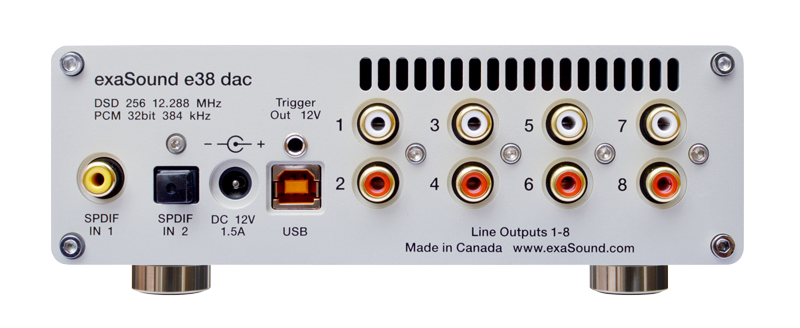
exaSound e38 8-channel Quad DSD DAC, rear view (image courtesy of exaSound)
Even fewer have heard what a really good decoder can do with stereo originals… millions have heard Dolby Pro-Logic II, since that's the default setting in most AVRs, and millions don't care for it. Some home-theater enthusiasts might jump on me for my criticism of the market leader, but frankly, I'm not impressed by secret algorithms from either Dolby or DTS. The burden of proof on how these secret gizmos actually work is on them, not the listener or the reviewer. If all they say to their captive market is: "trust us, everything we do is great," that leaves consumers to judge expensive (and quickly obsolete) AVRs by feature descriptions and how much they weigh.
From my perspective, the biggest, most satisfying quality of a top-class decoder is what it can do with stereo recordings… preferably in the "QS" or "RM" setting. It's a whole new way of listening to old (and new) favorites. My experience with Shadow Vector is decades old… in the early Seventies… but the sound that Malcolm Lear is describing in his house, with his software version of Shadow Vector, lines up with what I heard back then, and a heck of lot better than what's in AVRs now. That's why I'm excited by the release of the Involve Audio Surround Master V2, which from the description of the internals sounds like a first-class dynamic decoder with multiple settings for decoding SQ and QS, and level sets for individual channels and a master volume control for the whole system. I expect I will be hearing one in the months to come, along with a long-delayed review of the exaSound e38 DAC. (The delay is on my part, not the fault of exaSound, who sent me a new exaSound e38 to review only days after the last Surround article came out. I hope to get it connected this August and get some serious time listening to it.)
There's a whole world of surround music out there, and a surprising number of stereo recordings that sound magical when decoded into 4.0 or 5.1. I'll go out on a limb and say that most stereo recordings sound better when decoded into 4.0 or 5.1… it just takes the right decoder to really hear all the magic that's really there. Most of all, listen to your live stereo recordings with a good decoder… it changes the whole experience, and puts you right there in the audience.
Links and recommendations
Involve Audio Surround Master V2 (SQ and QS decoding and stereo enhancement, with analog inputs and outputs): http://involveaudio.com/surround-master/
exaSound e38 Mark II 8-channel DAC (multi-channel PCM and DSD from the USB input): https://www.exasound.com/Products/e38MarkII8-channelDAC.aspx
Discussion thread on Quadraphonic Quad forum, starts here, and goes on for several pages: https://www.quadraphonicquad.com/forums/index.php?threads/sq-shadow-vector-soundfield-mapping.25293/page-3
Shadow Vector patent (PDF): http://www.nutshellhifi.com/library/pat4018992.pdf
Here are some of my favorite recordings that sound exceptional decoded into 4.0 or 5.1: The Beach Boy's Surf's Up is one of the first quadraphonically encoded records made, and the CD release preserves the EV4 matrix encoding. The original master tapes did not use Dolby A noise reduction, but after-the-fact noise reduction was used for the CD transcription, so the original LP is noisier, but also has a stronger ambient impression. Beach Boys, Surf's Up. "Feel Flows," "Lookin' at Tomorrow," "'Til I Die," "Surf's Up"
Let's jump forward fifty years, with two releases from Joywave: Joywave, How Do You Feel Now?. "Traveling at the Speed of Light," 7:34 version; Joywave, Koda Vista. "Smokestacks."
And one that's a bit more out there… a little on the harsh side, but think of that as a good test for your DAC:
Rainsford, Emotional Support Animal, "S.I.D."
Here’s a pair of recordings that don’t have direct sounds on the sides or rear, but demonstrate the more natural, more relaxed soundspace of 4- and 5-channel sound.
Pat Metheny, Secret Story, "Cathedral in a Suitcase"; Stefano Lentini Fury, "Suite After the Furies."
All photographs and image processing by David W. Robinson, except as noted.





